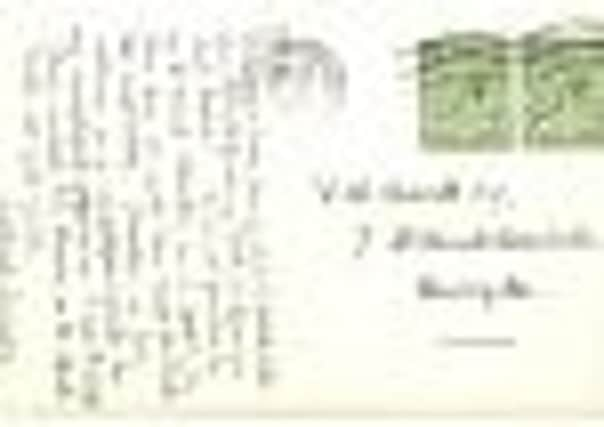Poet’s war of words


Such was the case with two cards handed in at a branch of Oxfam in Herne Hill, south east London, and sent by First World War soldier, poet and novelist Siegfried Sassoon to a correspondent addressed as “VW Garratt Esq.” at 7, St Clement’s Road South, Harrogate.
Research reveals the recipient to be Vere Garratt , who as a young factory worker in Birmingham attended English literature evening classes and became, as he put it, “like a child that becomes ecstatic with a fireworks display”. He was fired from his job for reading Thomas Carlyle instead of soldering gas meter fittings and later became a journalist and poet. His 1939 autobiography, Man in the Street, tells of escaping from his impoverished background and growing up with his father’s gambling addiction. It is also known that that on October 11, 1930 he wrote to Sassoon “admiring his war books”.
Advertisement
Hide AdAdvertisement
Hide AdOne card bears a photograph of Sassoon taken while finishing Memoirs of an Infantry Officer, published earlier in 1930. On the reverse, Sassoon writes that the picture provides “a fair idea of what I looked like while trying to finish my book at Syracuse last March. It was not possible for me to reveal [George] Sherston as a ‘poet’. To have done so would have made the book too complicated. Sherston, in both volumes, is a simplified vehicle for my simplified experience. I had to keep him inside his frame, so to speak.”
In the other card, Sassoon gives his reaction to Goodbye to All That, in which his war-time friend and fellow poet Robert Graves had written about Sassoon’s near-suicidal bravery. “Graves’s book is rather inaccurate & misleading,” writes Sassoon. “I wasn’t quite such a mad hatter as he has chosen to suggest! I prefer to to be known as a fairly reasonable being who likes a quiet life. Have you read Undertones of War [Edmund Blunden’s account of his traumatic war experiences]? That is a 1000 times better book than Graves’s...” It is signed: “With all good wishes, Siegfried Sassoon.”
The two autograph cards are estimated to fetch £600 to £800 at Bonhams in Oxford on June 28.
Sassoon won the Military Cross in 1916 while serving as a second-lieutenant in France.
Advertisement
Hide AdAdvertisement
Hide AdDuring a raid on enemy trenches, he remained for 90 minutes under heavy fire collecting and bringing back British wounded and dying.
The medal which even his family thought he had thrown into the River Mersey in 1917 in protest at the butchery on the Western Front, turned up in a descendant’s attic on the Isle of Mull, off the west coast of Scotland, and in 2009 was presented to the Royal Welch Fusiliers’ Museum, at Caenarfon Castle, in Gwynedd.
Sassoon died in 1967, aged 80.